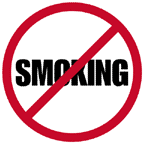
Vol. III, No. 4, April 2004
Passive Smoking Is a Threat to Children
 Most
state child care regulations prohibit smoking in the presence of children
in care, yet new research on the risk of passive smoking shows that children
may not need be present when the adult is smoking to be at risk. Recent studies
have shown that nicotine, the main ingredient of secondhand smoke, can still
be detected in the dust and air inside homes of smokers who go outside to
smoke. Children in such homes have up to eight times more nicotine in their
bodies than the offspring of non-smokers, according to the journal Tobacco
Control.
Most
state child care regulations prohibit smoking in the presence of children
in care, yet new research on the risk of passive smoking shows that children
may not need be present when the adult is smoking to be at risk. Recent studies
have shown that nicotine, the main ingredient of secondhand smoke, can still
be detected in the dust and air inside homes of smokers who go outside to
smoke. Children in such homes have up to eight times more nicotine in their
bodies than the offspring of non-smokers, according to the journal Tobacco
Control.
Although the levels are still quite low, they might possibly build up over time potentially creating a problem for children who are asthmatic or allergic to smoke. Cigarette fumes probably become lodged on the hair and clothes of child care workers as they smoke outside the building. Then the particles might possibly be brought inside where they settle in dust or hang in the air. Contaminated dust can settle on toys, carpets and bedding and may remain for months, which can be a real health hazard to infants and young children.
You might want to revisit your center's no smoking policy and your
employee selection criteria.

